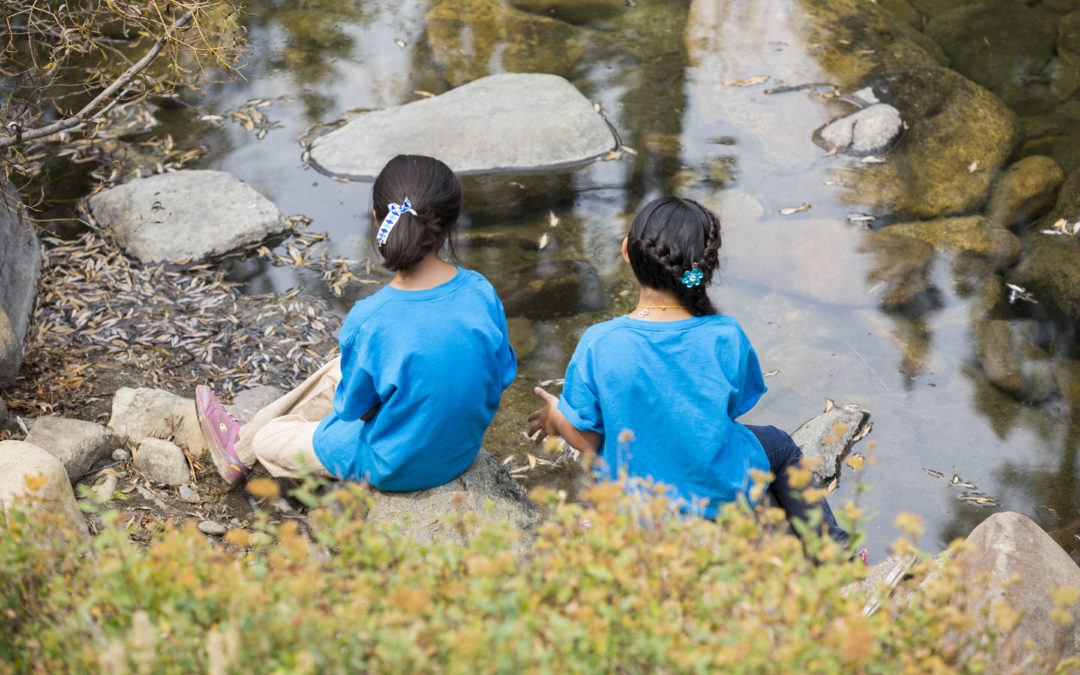It’s been a long day. The girls are coming off of a two-week midwinter vacation, they’re all either too hyped up or too tired, and the bickering begins. From, “Olivia said I can’t use her robot” and “Leah won’t sit next to me in the friendship circle,” to “She’s annoying, I can’t listen to her anymore,” it’s natural for conflicts to arise in any group setting. So what can we do to help prevent conflict from happening? And how do we manage it constructively when, despite our best efforts, it bubbles up anyway?
Today I’m sharing a few tips from experienced troop leaders, as well as the BFF (Be a Friend First) program from GSUSA, designed to help you build safe and smart conflict management guidelines for your troop!
First Things First: Create a Troop Charter
As a girl-led organization, our girls should work together to co-create basic guidelines for troop meetings. With your guidance, girls can create a simple set of rules, or a troop charter, with guidelines for appropriate behavior, how the meeting should be run, etc. and post it in your meeting space. You can use the Girl Scout Promise and Law to frame a conversation with the girls about how we should act toward each other based on the principles of Girl Scouts: honest and fair, friendly and helpful, etc. Discussing how to enforce the charter also gives the girls the power to choose, and they can make these enforcements as serious (or silly) as you think will be effective. Have the girls sign the agreement as a sign of their commitment to the troop charter.
Framing Troop Discussions
In building the troop charter, you can set up the framework for constructive discussions, and position the troop to learn about how to talk about problems and conflicts in a safe and manageable way. Guidelines for troop discussions can be as simple as:
- We don’t use anyone’s name when discussing a problem to avoid hurt feelings
- What we share within our group, stays within our group
This sets the stage for the “I-Statement”, a tool to help diffuse anger, state the facts, and recognize the feelings of all parties involved.
Using The I-Statement Method
Managing conflict is a learned skill—no one naturally knows how to find a compromise or address a personal attack from birth. In Girl Scouts, we use the I-Statement method, helping girls learn how to articulate both the problem and their feelings about the conflict.
It’s as simple as this:
When you ____________________________(describe a specific action that hurt you)
I feel ________________________________(say your feeling)
Because _____________________________(why the action made me feel this way)
Here’s an example:
When you won’t sit next to me in the friendship circle,
I feel sad,
because I want to be with you and be your friend.
This gives both parties some perspective into what the actual problem is, and a way to address the situation. Notice that the I-Statement does not contain name calling or personal attacks, which makes it a great tool for girls to share their feelings without creating more conflict.
To get started on implementing the I-Statement method in your troop, use this one-hour planned activity, from GSUSA’s Ban Bossy program, to walk your girls through how to use I-Statements. It’s a great way to get familiar with the problem-solving method before an actual problem arises!
Practice, Practice, Practice
In the heat of the moment, it’s easy to forget to use the tools we have in our back pockets. Throughout the year, regularly remind the girls to use the I-Statement to ensure their point and feelings are clear. Sometimes, a simple misunderstanding can be easily rectified with an I-Statement.
And just one more thing…
Occasionally, things escalate to a point that requires intervention. When this happens, let the girls know that it’s OK to take some time to regroup after a conflict.
- Have all the girls decide upon a semi-private space where they can go when they need a moment to calm down or just until they’re ready to rejoin the others. This way, it is clearly not punitive (like being sent to “time-out”), but more like taking control of thoughts and feelings by gathering one’s thoughts away from the group.
- If a girl is overwhelmed, give her some space and keep the fun going for the rest of the troop.
- At the end of the troop meeting, check-in and make sure she’s doing okay or if she has anything she would like to discuss with you.
And that’s all there is to it! By stepping through conflict resolution strategies with your troop, you give girls an opportunity to lead. As they learn and apply the conflict resolution process, they’ll learn how to handle life’s challenges all on their own.
Do you have any tried-and-true strategies for handling conflict within your troop? Share them with your fellow troop leaders in the comments below!
What’s next?
- For continued learning, check out GSUSA’s online course on conflict management or this related read from Girl Scouts River Valley on how to Prevent and Handle Troop Conflict.
- Did you know that GSUSA + LeanIn.org teamed up to create Ban Bossy? It’s a campaign designed to help girls flex their leadership muscles—and have fun doing it (and contains some great resources on conflict management, too).
- Bullying is definitely not cool, which is why Girl Scouts developed the BFF (Be a Friend First) program. Check out the BFF curriculum, which can be used in your troop meetings to help girls explore thorny issues like peer pressure, stereotyping, gossiping, and cliques through role playing, creative writing, games, and discussion exercises.
 Heather Burlew-Hayden—Heather is the Chief Marketing and Recruitment Officer for Girl Scouts of Northern California. A former Girl Scout, she comes from a long line of Girl Scouts and Girl Guides, including her sisters, mother, grandmother, and great aunt Margaret who earned her Golden Eaglet in the 1930s! Originally from Upstate New York, she has lived in SoCal, Washington DC, and Brooklyn (Holla!) before landing in Northern California. She loves to travel, eat, and read read read.
Heather Burlew-Hayden—Heather is the Chief Marketing and Recruitment Officer for Girl Scouts of Northern California. A former Girl Scout, she comes from a long line of Girl Scouts and Girl Guides, including her sisters, mother, grandmother, and great aunt Margaret who earned her Golden Eaglet in the 1930s! Originally from Upstate New York, she has lived in SoCal, Washington DC, and Brooklyn (Holla!) before landing in Northern California. She loves to travel, eat, and read read read.


